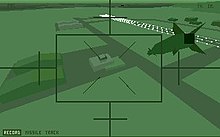
Populous is a video game developed by Bullfrog Productions and published by Electronic Arts, released originally for the Amiga in 1989, and is regarded by many as the first god game. With over four million copies sold, Populous is one of the best-selling PC games of all time.

Microsoft Flight Simulator is a series of flight simulator programs for MS-DOS, Classic Mac OS, and Microsoft Windows operating systems. It was an early product in the Microsoft application portfolio and differed significantly from Microsoft's other software, which was largely business-oriented. Microsoft Flight Simulator is Microsoft's longest-running software product line, predating Windows by three years, and is one of the longest-running video game series of all time.

SimCity 2000 is a city-building simulation video game jointly developed by Will Wright and Fred Haslam of Maxis. It is the successor to SimCity Classic and was released for Apple Macintosh and MS-DOS personal computers in 1993, after which it was released on many other platforms over the following years, such as the Sega Saturn and SNES game consoles in 1995 and the PlayStation in 1996.

F-19 Stealth Fighter is a combat flight simulator developed and released in 1988 and 1990 by MicroProse, featuring a fictional United States military aircraft. It is the 16-bit remake of the 8-bit game Project Stealth Fighter, which was released for the Commodore 64 in 1987. It was also ported to the NEC PC-9801 in Japan only, and the DOS version was re-released on Steam distribution platform in 2015.

Rise of the Dragon, released in 1990 by Dynamix, marks the company's venture into the cyberpunk genre, distinct from its usual portfolio of action and flight simulators. This graphic adventure game is set in a future dystopian version of Los Angeles, circa 2053, and follows the story of detective William 'Blade' Hunter as he investigates the death of the mayor's daughter, linked to a dangerous new drug, MTZ. The gameplay combines detective work, strategy, and action. Players must solve puzzles that influence the storyline, interact with characters who remember past choices, and tackle action sequences. If players fail these sequences multiple times, the game may offer to automatically complete them.

Epic is a space combat simulation game developed by Digital Image Design and published by Ocean Software for the Commdore Amiga and Atari ST in early 1992. A port to MS-DOS also appeared in the same year, followed by a version for the NEC PC-9801 in 1993. A sequel, titled Inferno, was released in 1994 for PCs only.

PGA Tour Golf is a golf video game and the first in the PGA Tour game series. It was developed by Sterling Silver Software and released in 1990, for MS-DOS. It was initially published by Electronic Arts, which subsequently released versions of the game for Sega Genesis and Amiga in 1991, followed by a version for the SNES in 1992. By 1994, Tengen had published versions for Sega's Master System and Game Gear consoles. PGA Tour Golf received generally positive reviews for its realism, sound, and camera. Several critics considered the computer versions to be the best golf game available at the time of its release. It was followed by PGA Tour Golf II.
Microsoft Flight Simulator began as a set of articles on computer graphics, written by Bruce Artwick throughout 1976, about flight simulation using 3-D graphics. When the editor of the magazine told Artwick that subscribers were interested in purchasing such a program, Artwick founded Sublogic Corporation to commercialize his ideas. At first the new company sold flight simulators through mail order, but that changed in January 1979 with the release of Flight Simulator (FS) for the Apple II. They soon followed this up with versions for other systems and from there it evolved into a long-running series of computer flight simulators.

Shuttle is a space flight simulator game developed by Vektor Grafix and published by Virgin Games. It was released in 1992 on the IBM PC, Amiga and Atari ST.
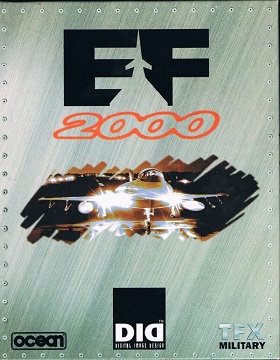
EF2000 is a combat flight simulator video game developed by Digital Image Design (DID) and published by Ocean Software in 1995 for the PC DOS. It is the sequel to DID's earlier software title, TFX. An expansion pack, EF 2000: TACTCOM, was released in 1996. A compilation, EF 2000: Evolution, that included the main game and the expansion was released in 1996. An updated version, Super EF2000, was released exclusively for Windows 95 in 1996 in Europe. In 1997, a compilation titled EF2000 V2.0 was released in North America that included the original DOS versions of EF2000 and TACTCOM and also the Windows exclusive Super EF2000. In June 1997, the graphics were boosted when DID released the "Graphics+" patch, which added Rendition Vérité hardware support and Glide API for 3dfx graphics card support to EF2000.

F29 Retaliator is a combat flight simulator video game developed by Digital Image Design and published by Ocean Software in 1989 for the Amiga and Atari ST, 1991 for the PC, and for the FM Towns and NEC PC-9801 in 1992-1993. Its working title was just Retaliator. The game was developed during the end of the Cold War, based mostly on speculations on then-future aircraft that were expected to be in use by the year 2002, in particular based on the design of the Lockheed Martin F-22 and the Grumman X-29A.
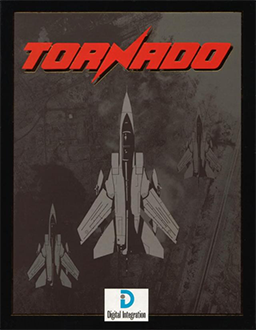
Tornado is a combat flight simulator video game by Digital Integration that models the Panavia Tornado. It was released in 1993 for DOS and Amiga. Tornado is one of the first flight simulations to offer head-to-head online dogfights.
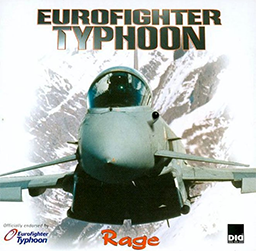
Eurofighter Typhoon is a combat flight simulator published by Rage Software in 2001. The game models the jet fighter Eurofighter Typhoon. Digital Image Design was in process of developing the game as successor to F-22 Total Air War when the company was bought by Rage Software. An extended version of the game with an additional campaign, Eurofighter Typhoon: Operation Icebreaker, was released in 2002.

MiG-29 Fulcrum is a combat flight simulator video game released by Domark in 1990 for the Acorn Archimedes, Amiga, Atari ST and MS-DOS PC platforms.
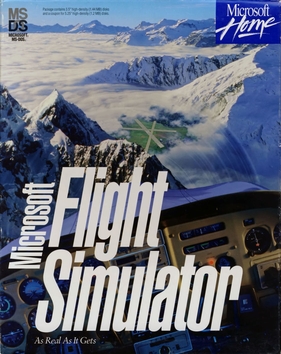
Microsoft Flight Simulator, commonly known as Microsoft Flight Simulator 5.0 or FS5, is a flight simulator video game. It was released in late 1993 for the MS-DOS. A port for PC-98 was released in 1994. It was the last game in the series for DOS and the last game to appear on a non-Microsoft platform. An updated version, 5.1, was released in 1995. In November 1995, Microsoft acquired the Bruce Artwick Organization (BAO) from Bruce Artwick. Employees were moved to Redmond, Washington, and development of the series continued in-house at Microsoft.
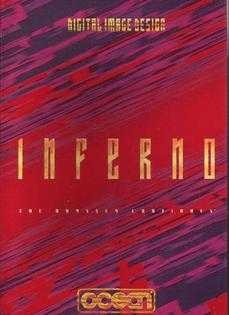
Inferno is a space combat simulator video game developed by Digital Image Design and published by Ocean Software in 1994 for the PC. It is a sequel to the 1992 game Epic.

Falcon is a combat flight simulator video game and the first official entry in the Falcon series of the F-16 jet fighter's simulators by Spectrum HoloByte. Originally developed by Sphere for Macintosh and MS-DOS in 1987 and ported to several platforms between 1988 and 1992, the game earned commercial success and critical acclaim.

Jet is a combat flight simulator video game originally published in 1985 by Sublogic. The game was released in 1985 for MS-DOS and the Commodore 64, 1986 for the Apple II, 1988 for the Atari ST and Amiga, and 1989 for the Macintosh and NEC PC-9801.

Nobunaga's Ambition is a 1986 strategy game by Koei, focused in the Sengoku period of the history of Japan. A part of Koei's "Historical Simulation" line of titles, it was published on several platforms such as IBM PC compatibles, Amiga, the Nintendo Entertainment System, Super NES, and Mega-Drive. It is the second game in the Nobunaga's Ambition series and the first Nobunaga's Ambition title to be released in English. The player has the objective unifying Japan as Oda Nobunaga or as any of the other daimyos present in the game. Several revisions were made to the gameplay since the first game, as well as a 50-province mode which expanded the game's map to feature all of Japan.
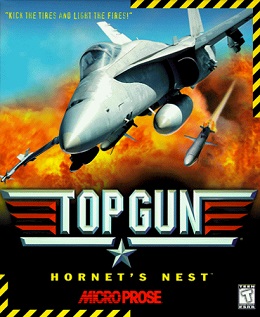
Top Gun: Hornet's Nest is a 1998 combat flight simulation game developed by Zipper Interactive and published by MicroProse for Microsoft Windows. It is loosely based on the 1986 film Top Gun, and is a sequel to the 1996 game Top Gun: Fire at Will. The game was criticized for its lack of realism and its flight physics.

